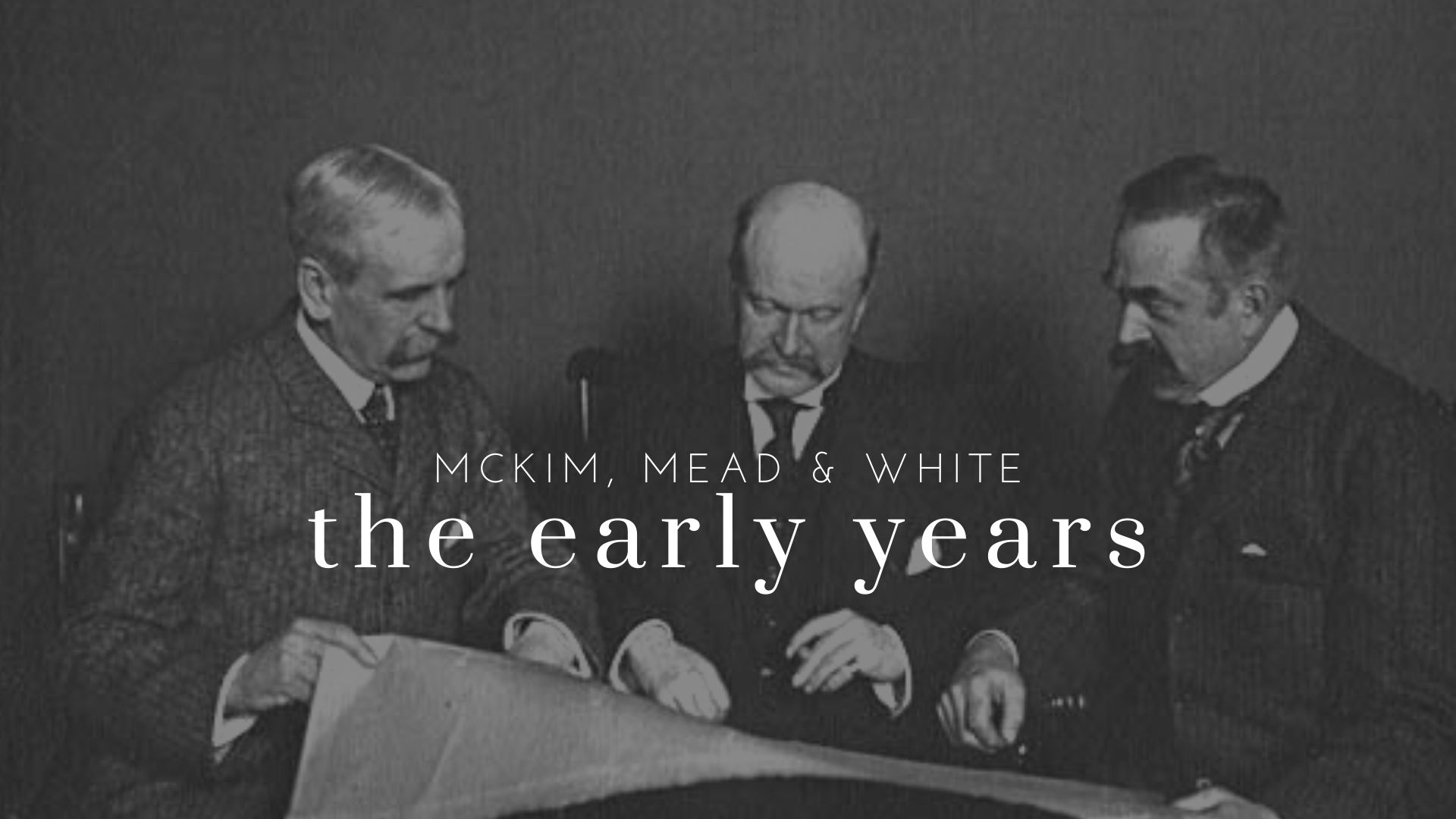On Thursday, April 29 from 6:00 to 7:15 PM (ET), fans of McKim, Mead & White and their architecture are in for a rare treat. That’s when Landmark West! will host a Zoom lecture with N.Y.U. Prof. Mosette Broderick, architectural historian and author of “Triumvirate: McKim, Mead & White (Knopf, 2010). Her topic of choice: the early years of “The Real Architects of New York City.” It’s a fundraiser for Landmarks West! to protect historic districts on the Upper West Side. A+A interviewed Prof. Broderick by phone this morning, for one post today and another tomorrow:
To say Mosette Broderick knows how to tell a story is like calling the Morgan Library just another building.
For example, there’s this singular jewel of a memory: “Long, long ago when I was in college, my art history instructor stood on Madison Avenue looking at 78th Street and pointed to the southwest and northwest corners and remarked that these were architecturally significant houses by a once famous architectural firm,” she says. “The class was blank. But one student piped up. ‘Yes,’ she responded, ‘The house on the north side was designed by Stanford White, and my grandfather killed him.’”
That’s just for starters. Broderick knows the stories of Charles Follen McKim, William Rutherford Mead, and Stanford White as though she were related to them. And she’s happy to share those stories with anyone interested.
Separately it seems not one of the three were destined for greatness. But collectively from the late 1800s through the early 1900s, they put American architecture on the global map. “With their contributions, they brought us into the same milieu of Western architecture as practiced in Europe – they grafted us to it,” she says. “They brought us into the world.”
McKim was the son of a Presbyterian minister – a prominent abolitionist – and his Quaker wife. Perhaps neglected by a busy father, the boy was slow to find his way in the world. “As a child he didn’t show great prospects, and his parents struggled to figure out what to do with him,” she says. “The goal of the high-minded was Harvard College, and he couldn’t get in, but went to a branch of Harvard called the Lawrence Scientific School.”
Alas, he didn’t do well, so he departed America for Europe to study engineering and hydraulics. “Somehow along the way he ventured into architecture and to Paris, then got caught up in history – and that opened his eyes,” she says. “He came back to America and met Mead, another person without much direction.”
Mead had attended two years at Amherst College, but was flailing. Together in 1878, the two began to design homes for friends of their parents in New Jersey and New York. “They were run-of-the-mill – very ordinary homes,” she says.
About this time, the two fell into a circle with two talented people. The first was Joseph Morrill Wells, a man of humble origins and great talent who helped give form to their work. The second was Sidney Stratton, who delivered the social connections that brought in clients. “He got them into the clubs that they would later design,” she says.
By 1879, Stanford White had left Henry Hobson Richardson to join McKim and Mead as a partner – an offer Wells would reject before he died in 1890. Still, Wells’ impact was significant. “He had a profound influence on Stanford White,” she says. “Joe Wells made it possible for them to design.”
With White as partner, though, the triumvirate had been perfected. “Not only could White ‘draw like a house afire,’ but he could also do interiors,” she says.
For almost 30 years, the three architects and their associates would flourish like no other firm in New York.
Tomorrow: Changing American architecture.
For more, go here.
[slideshow id=2301]



